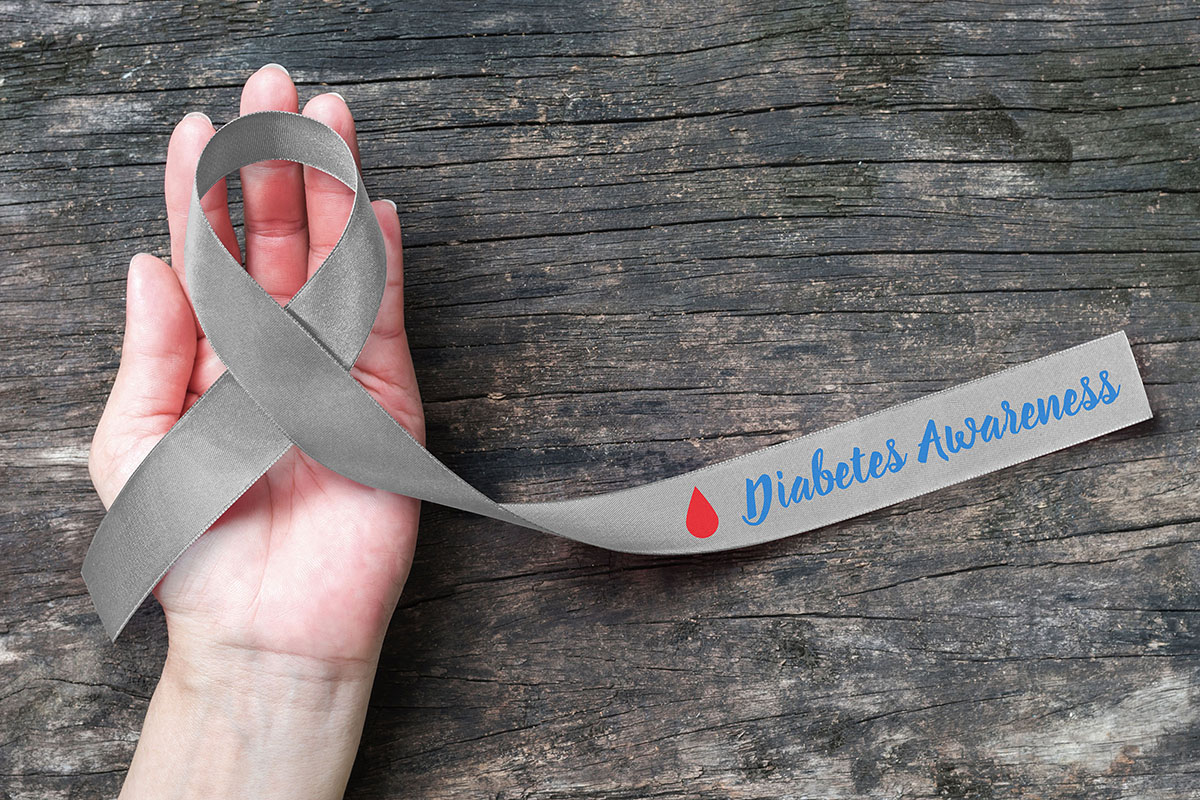World Diabetes Day will be observed on November 14
Wednesday, November 1, 2023
In 1922, a 14-year-old child received the first-ever insulin injection to bring his high blood sugar into a manageable range. To honor this breakthrough in medical science, Nov. 14 is World Diabetes Day and also the birthday of Sir Frederick Banting, who, along with Charles Best, first extracted insulin from an animal in 1921.
This changed the course of diabetes forever, and changed type 1 diabetes from being a rapid, painful death sentence to something that could be managed over a normal lifespan, said Lauren Amaya, Oklahoma State University Extension diabetes specialist.
There are two types of diabetes. Type 1 diabetes is an autoimmune condition in which the immune system attacks beta cells in the pancreas, which are responsible for insulation production. This disease is typically diagnosed during childhood or adolescence.
“Lifestyle and diet have no impact on the development of type 1 diabetes, though once a person has developed it, lifestyle and diet will help with diabetes management,” Amaya said. “The use of insulin injections or an insulin pump are essential for survival.”
Type 2 is much more common than type 1 and accounts for about 95% of all diabetes cases. In this instance, the body doesn’t use insulin effectively. Because of this, a person doesn’t produce enough insulin to compensate for the insulin resistance, so blood glucose levels are elevated.
“Risk factors for type 2 diabetes include family history, overweight or obesity, physical inactivity, being from a minority population, over age 45 or previously having gestational diabetes or having an infant weighing over 9 pounds at birth,” she said. “While type 2 diabetes isn’t reversible, management of weight and physical activity levels can drastically improve metabolic outcomes and help to prevent diabetes complications.”
Amaya said there are other diabetic conditions that can cause health issues, including prediabetes, gestational diabetes and latent autoimmune diabetes in adults (LADA). She said prediabetes and gestational diabetes are the only forms of diabetes that are considered reversible.
“Prediabetes affects more than one in three Americans and most don’t even realize they have it,” she said. “If lifestyle changes aren’t made at this stage, most individuals will eventually develop type 2 diabetes. A weight loss of just 5% to 7% can significantly reduce the risk of developing type 2 diabetes.”
To help those with type 2 diabetes, OSU Extension offers L.E.A.D. as a diabetes management program. Live well, Eat well, be Active with Diabetes is a four-lesson program developed by Amaya and Janice Hermann, OSU Extension nutrition specialist, that provides tools, resources and hope to individuals across the state who are managing the chronic condition.
OSU Extension also offers the National Diabetes Prevention Program for those with prediabetes. Amaya is planning to offer a virtual cohort later this fall. Those interested in the course may contact her at lauren.amaya@okstate.edu. This test is helpful in determining if a person is at risk or may have prediabetes.
Gestational diabetes is diagnosed between the 24th and 28th week of pregnancy. During this time, the placenta produces a lot of hormones. This, coupled with weight gain, leads to insulin resistance. Causes of gestational diabetes can include genetics, older (over age 25) maternal age during pregnancy, being overweight, previously having a baby over 9 pounds, having polycystic ovary syndrome or being in an ethnic group that puts individuals at higher risk of disease development.
Amaya said treatments include regular monitoring of blood glucose, eating healthy foods at appropriate times, physical activity and possibly insulin injections.
LADA is sometimes referred to as type 1.5 diabetes. It typically begins in adulthood and can initially be treated like type 2 diabetes with lifestyle modifications and oral diabetes medications. However, sometime after about six months, these treatments are no longer effective due to the slow destruction of beta cells. A person with LADA will eventually require multiple daily insulin injections for survival.
“Managing diabetes effectively is vital for your health. It takes time and effort,” Amaya said. “While a health care team is important, self-management is the key.”

